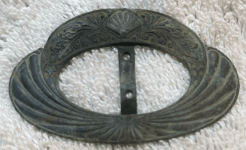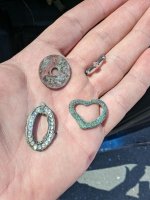Bharpring
Bronze Member
- Dec 29, 2016
- 1,451
- 5,895
- 🏆 Honorable Mentions:
- 3
- Detector(s) used
- XP Deus HF coils, Minelab Equinox 800
- Primary Interest:
- All Treasure Hunting
Are you sacrificing any depth using Disc 10 with Pitch tone vs Full Tones with low (or no) Disc?
Without the Disc 10 in Pitch, big iron sounds very good like non ferrous targets.
Without the Disc 10 in Pitch, big iron sounds very good like non ferrous targets.






